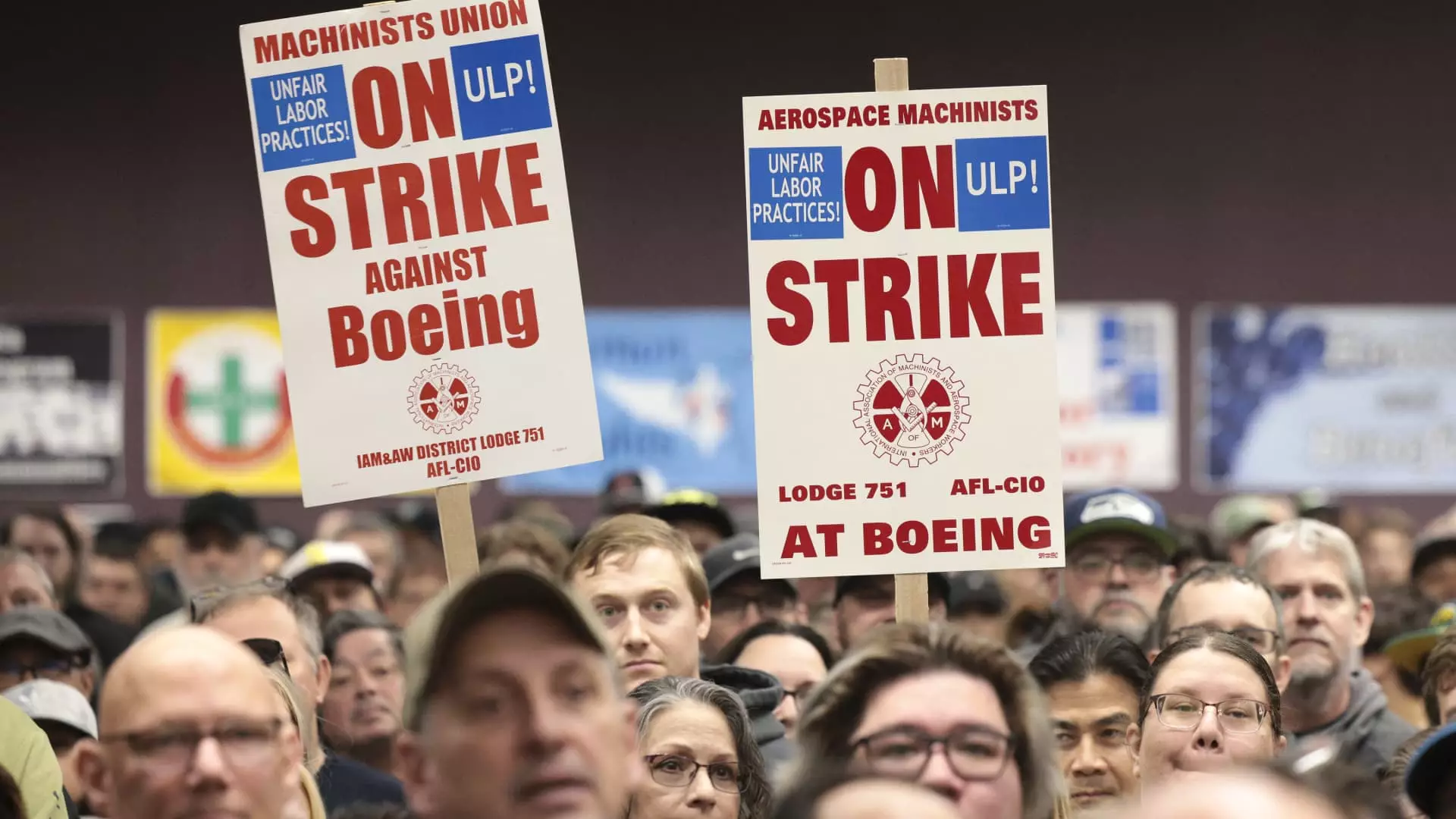The recent contract proposal reached between Boeing and its machinists’ union marks a pivotal moment in an ongoing labor dispute that has significantly impacted the aerospace giant’s production capabilities. With the strike, initiated on September 13, 2023, over 30,000 machinists voiced their dissatisfaction, ultimately rejecting a prior tentative agreement that offered 25% wage increases over a four-year period. This overwhelming rejection signals deeper grievances among the workforce, which may extend beyond mere financial concerns. The current proposal, which reportedly includes a more substantial 35% wage increase and additional benefits, is set for ratification on Wednesday. However, the question remains: is this agreement a genuine resolution or merely a stopgap measure?
The new proposal includes a range of heightened benefits designed to entice workers back to their posts. Key incentives, such as a $7,000 signing bonus, guaranteed minimum payouts in an annual bonus program, and increased contributions to 401(k) plans, illustrate an effort by Boeing to gain the favor of its employees. While these numbers seem appealing on the surface, they warrant a more in-depth examination. For instance, what does a 35% increase mean in the context of the rising cost of living, and how does it compare to industry standards? Moreover, the discussions surrounding these benefits did not occur in a vacuum; they were influenced by significant pressures stemming from Boeing’s current financial distress, including a reported anticipated loss of $5 billion in its commercial and defense sectors.
Acting U.S. Secretary of Labor, Julie Su’s involvement reflects the importance of this negotiation not just for Boeing, but for the entire aerospace industry. Her presence signals governmental interest in maintaining stability within this critical sector, with both sides recognizing the far-reaching implications of prolonged strikes. However, infrastructural reform is critical if Boeing is to emerge stronger from this debacle. A ratified contract might temporarily appease machinists, yet unless Boeing is willing to address the root issues—employee morale, workplace safety, and sustainable business practices—this outcome may yield only fleeting relief.
New CEO Kelly Ortberg, who took the helm of Boeing in August, has his work cut out for him. He faces not only the challenge of facilitating a smooth transition post-strike but also of re-stitching the fragmented relationship between management and labor. The announcement of job cuts, which affect 10% of Boeing’s workforce, coupled with the decision to cease production of the 767 by 2027, highlights the urgency of structural change within one of the world’s foremost manufacturers. These choices reflect a company in a state of flux, besieged by safety crises and operational hurdles that require immediate and thoughtful intervention.
As potential results loom in the near future, the outcome of this contract ratification stands at a crossroads for Boeing. The union’s decision will undoubtedly shape the immediate course of action and may set critical precedents for future labor engagements. Yet, beyond the numbers offered in the contract, the broader implications—employee satisfaction, corporate ethics, and innovative practices—will be paramount in determining Boeing’s long-term resilience in a challenging economic landscape. The world watches as Boeing attempts to navigate these turbulent waters, hoping for a resolution that transcends temporary fixes.

